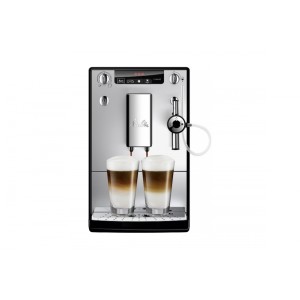
Coffeemakers or coffee machines are cooking appliances used to make coffee. While there are various types of coffeemakers making use of a number of various brewing concepts, in the most typical devices, coffee premises are positioned in a paper or metal filter inside a channel, which is set over a glass or ceramic coffee pot, a cooking pot in the pot household. Cold water is put into a separate chamber, which is after that heated up to the boiling point, as well as routed into the funnel. This is likewise called automatic drip-brew.
History
For hundreds of years, making a mug of coffee was a basic procedure. Roasted as well as ground coffee beans were positioned in a pot or pan, to which hot water was added, adhered to by add-on of a lid to begin the infusion procedure. Pots were made specifically for brewing coffee, all with the function of attempting to catch the coffee premises prior to the coffee is put. Typical styles feature a pot with a flat broadened base to capture sinking premises and also a sharp put spout that catches the floating grinds. Various other layouts include a vast lump in the center of the pot to capture premises when coffee is poured.
In France, in about 1710, the Infusion brewing procedure was presented. This engaged submerging the ground coffee, normally enclosed in a linen bag, in warm water and also letting it steep or "instill" till the preferred stamina brew was attained. However, throughout the 19th as well as even the very early 20th centuries, it was taken into consideration ample to add ground coffee to hot water in a pot or frying pan, boil it until it scented right, as well as put the mixture right into a cup.
There were great deals of technologies from France in the late 18th century. With assistance from Jean-Baptiste de Belloy, the Archbishop of Paris, the idea that coffee need to not be steamed gained approval. The very first modern-day technique for making coffee using a coffee filterâEUR" drip brewingâEUR" is greater than 125 years old, and also its design had actually changed little bit. The biggin, originating in France ca. 1780, was a two-level pot holding coffee in a towel sock in an upper area right into which water was poured, to drain pipes through holes in all-time low of the compartment right into the coffee pot listed below. Coffee was then dispensed from a spout on the side of the pot. The top quality of the brewed coffee relied on the size of the grounds - as well crude as well as the coffee was weak; also fine as well as the water would certainly not drip the filter. A major issue with this strategy was that the taste of the cloth filter - whether cotton, burlap or an old sock - moved to the preference of the coffee. Around the same time, a French creator created the "pumping percolator", in which boiling water in a lower chamber pressures itself up a tube and after that trickles (percolates) with the ground coffee back right into all-time low chamber. To name a few French innovations, Count Rumford, an eccentric American scientist living in Paris, established a French Drip Pot with a protecting water coat to maintain the coffee warm. Likewise, the very first steel filter was established and also patented by French developer.
Kinds
Vacuum brewers
Various other coffee developing gadgets ended up being prominent throughout the nineteenth century, including various devices using the vacuum principle. The Napier Vacuum Maker, invented in 1840, was an early kaffeevollautomaten test bester geschmack example of this kind. While normally as well complex for day-to-day usage, vacuum tools were valued for producing a clear mixture, as well as were popular up until the middle of the twentieth century.
The concept of a vacuum maker was to warm water in a reduced vessel up until expansion compelled the contents via a narrow tube right into an upper vessel having ground coffee. When the lower vessel was vacant as well as enough developing time had actually elapsed, the warmth was removed and also the resulting vacuum would attract the made coffee back via a strainer right into the reduced chamber, where maybe decanted. The Bauhaus analysis of this gadget can be seen in Gerhard Marcks' Sintrax coffee machine of 1925.
A very early variant method, called an equilibrium siphon, was to have the two chambers organized side-by-side on a type of scale-like device, with a counterweight affixed opposite the first (or heating) chamber. As soon as the near-boiling water was forced from the heating chamber right into the developing one, the counterweight was triggered, triggering a spring-loaded snuffer ahead down over the fire, hence turning "off" the heat, as well as enabling the cooled down water to go back to the initial chamber. This way, a type of primitive 'automated' developing approach was attained.